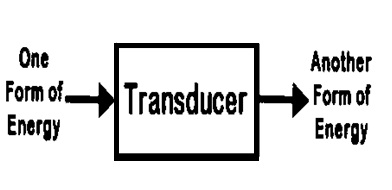What is Transducer?

Types of Transducers
There are many different types of transducers, they can be classified based on various criteria as:
Types of Transducer based on Quantity to be Measured
- Temperature transducers (thermocouple)
- Pressure transducers (diaphragm)
- Displacement transducers (LVDT)
- Oscillator transducer
- Flow transducers
- Inductive Transducer
Types of Transducer based on the Principle of Operation
- Photovoltaic (solar cell)
- Piezoelectric transducer
- Chemical
- Mutual induction
- Electromagnetic
- Hall effect
- Photoconductors
Active Transducer
Passive Transducer
Mechanical Transducers:
1) Bellows: These are the elastic elements that convert the air pressure into displacement, and it is commonly used for the measurement of pressure.
2) Bourdon tube: This elastic tube converts air pressure to the rotary motion of the pointer used to indicate the pressure.
3) Spring: The spring tends to expand when force is applied to them, thus they are used for the measurement of force.
4) Proving rings: Like the springs the proving rings also convert applied force to displacement.
5) Diaphragm: It converts applied pressure to displacement.
6) Manometer: The manometer converts the applied pressure into the variable displacement of the liquid within it enabling it to measure the pressure.
7) Thermocouple: Thermocouple is the device that produces an electric current when one of its ends is heated. The current produced by the device can be measured, which can be calibrated against the temperature enabling us to measure the temperature of the body.
8) Bimetals: These are the bimetallic strips comprising of two different metals having a different coefficient of thermal expansion, joint together. When the strip is heated one metal expands lesser while the other metal expands more leading to the deflection of the bimetallic strip, which is converted into the rotary motion of the pointer that indicates the temperature.
9) Hydropneumatic transducers: These include devices like orifice, venturi, pitot tube, vanes, and turbines that are used for measurement of pressure, velocity, flow rate, and force of water.

